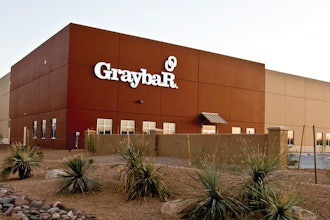In the end, we’re all marketers and, therefore, all liars. At the same time, some of our stories have a clear ring of truth.
All marketers are liars. And since we’re all marketers of one thing or another, we’re all liars. To give proper credit, Seth Godin, the provocative business pundit, started it with his book, All Marketers are Liars. And, as the syllogism makes incredibly clear, he was 100 percent on the mark.
This isn’t an indictment of P&G, BofA, Chrysler, Goldman Sachs, McDonalds or any other organization, big or small. There are probably more liars on LinkedIn, Facebook, and any other social media, where tens of millions of self-marketers have a field day making claims that wouldn’t stand up before a sixth grade class.
And as a recent USA Today Snapshots® noted, some 70 percent of self-marketers admit to doing some “fabricating” with their countless unsupportable claims as they do their best to sell their product. This, of course, doesn’t take into account the desperately doctored job applications, resumes, and college applications, but it does include at least a few U.S. presidents and a rather long list of Members of Congress.
Even though Seth Godin was on to something significant, he changed the title of the latest edition of his book. It’s now, All Marketers Tell Stories. Needless to say, we’re all marketers and we tell some whoppers that make us feel better about ourselves, give us an advantage, or enhance our image.
At the same time, the Internet gives us opportunities ad nauseam to “tell stories.” However, this is neither a defect nor the downfall of truth-telling. Happily, there are millions of people who are constantly setting the records straight, which is why Wikipedia and tens of thousands of reviews work so well. The fraud detectors are always at work! The only ones who are deceived by making unsupported claims are those who make them. Today, the Marlboro man would be sent packing.
All of this is to say that nobody marketing a product or service should deceive themselves into believing that what they’re doing is the exception to the rule. Believe it or not, marketing today must pass the truth test. In fact, much of what we market is better; often, much better. For some reason, many marketers think success depends on lying. A good example of this is the fast food industry, which seemed to think that consumers would ignore 1,200-calorie burgers forever. So, here’s the test. It’s a simple way to see if your marketing passes muster.
1. Why would customers want to buy what you’re selling? Believe it or not, this is a serious question. Does what you’re marketing solve perceived problems for customers, or trumped up ones? Can they count on it to deliver on your promises?
“How does it help me?” is a significant question. Take the issue of national brands versus store brands at the supermarket and other places. In the past, consumers opted for the “leading national brands,” until the recession hit. Then, quite suddenly, store brands were getting much more shelf space, as consumers gave serious attention to the cost question.
2. Are you telling the truth? It may seem strange to align marketing with truth, since they appear to be such strange bedfellows. As easy as it is to be cynical, consider this: On the day that Steve Jobs announced the Apple iPad, before more than a handful of people had one in their hands, he boldly stated that it was “a truly magical and revolutionary product.” Then he went on to say: “What this device does is extraordinary. It is the best browsing experience you’ve ever had. It’s unbelievably great ... way better than a laptop. Way better than a smart phone.”
Wow! Here were so many over-the-top claims in so few words, yet they were not hyperbole in the case of Steve Jobs and the iPad. If anyone else had tried it, they would have failed. He wasn’t laughed off the stage for one reason: He had a proven track record of delivering on his promises, of telling the truth. Instead of being booed, he was applauded.
The truth works. Unfortunately, many marketers haven’t yet learned that lesson.
3. Is the marketing message sufficiently compelling to move prospects to action? Or, to put it another way, robust offers work, while wimpish ones don’t. A case study in BtoB, the marketing publication, describes an AT&T campaign directed to a group of 75 top executives of leading hotels. The campaign was based on the J.D. Power and Associates finding that WiFi is the most valued amenity travelers want to know about before checking in to a hotel. AT&T wanted to make sure the executives knew about it and that the company had solutions for them.
Ironically, AT&T decided on a direct mail campaign, with the goal of getting meetings with AT&T sales reps. Recognizing that high level executives are well insulated from invasive attempts, they took a “You’ve got to see this” approach. The first mailing was an attention-getting package with an actual Wi-Fi locator device inside, with this message: “Locating Wi-Fi at [name of hotel chain].” Sales reps made follow-up calls to verify that the package had arrived and to ask for a meeting.
The second mailing went to those who did not respond. It was “a custom dimensional piece consisting of a cardboard mock-up of a netbook-like computer,” reported BtoB. Rather than a screen, it sported video-in-print technology that played a two-minute video personalized for each hotel chain. Next day delivery upped the ante even more by requiring the signature of the recipient. Again, the sales team followed up using several ways to contact the prospects. It was a powerful combined effort between marketing and sales.
Those making the commitment to meet with the sales reps received a special thank you—a real netbook computer.
Based on the traditional 2 percent response rate for direct mail, AT&T reached 9 percent, based on face-to-face sales meetings.
4. How do our products or services stand up to those of the competition? The marketing objective is not to outdo the competition, even though that’s quite common. Rather, the goal is to out-think the competitors. The tendency is to pile on the bells and whistles, even though, as we all know, no one has a clue how to use them and wouldn’t even if they knew how. Who has mastered the common cable TV clicker? Who can use 10 percent of the capability on the simplest digital camera? I think they call them “smart phones” because they are clearly smarter than the users.
Whether less is more is debatable, but many times less best meets the customer’s needs. After using a particular computer program for analyzing Workers’ Compensation data, Kevin Ring, the Lead Workers’ Comp Analyst at the Institute of WorkComp Professionals in Asheville, N.C., wondered why so many of the Institute’s advisors weren’t using the software. He determined that, for what they needed, it was too powerful and seemed somewhat daunting to use for simple reporting.
Ring then developed a new program, designed to give salespeople exactly what they wanted—one that’s easy to use, quicker, and costs less. It’s a good example of how out-thinking the competition is a powerful marketing strategy.
With these four questions, you can put your marketing to the test. If it passes, congratulations. But if your marketing leaves something to be desired, this is a good time to get to work. In the end, we’re all marketers and, therefore, all liars. At the same time, some of our stories have a clear ring of truth.
John R. Graham is president of Graham Communications, a marketing services and sales consulting firm.






















